Why Are Windows Made of Sapphire?
We manufacture high quality, precise components and assemblies.
Overview
Sapphire windows have long been used in medical, military, and manufacturing applications, providing these industries with a variety of tools that feature stronger, scratch-resistant shielding.
As this technology gains popularity, however, demand increases which enables manufacturers to cut production costs.
In turn, this cost reduction allows the public to start enjoying the benefits of this transparent, glass-like substance in the products that we utilize every day, particularly in camera lenses, phone screens, and other types of “windows” which must provide transparent optical clarity.
When there are hundreds of substances out there, why are the windows made of sapphire?
In this article, you’ll learn the answers to several key questions about sapphire windows.
Cut into highly precise shapes for a variety of needs, these windows are not produced the same way typical glass panes would be, giving them a strong advantage against shattering and smudging like normal glass.
These windows can come in many different precise shapes and sizes, with different coatings and quality grades depending on the use, which is why it is important to know what application the sapphire window will fulfill in what measurements before ordering.
In this article from Analytical Components, you’ll learn everything you need to know about sapphire windows, from what they are, to how strong they are, key attributes to what makes a good sapphire window, and even some of the popular uses across different industries.
What is a Sapphire Window?
Sapphire windows are clear, birefringent thin sheets of “glass” made from a lab-grown sapphire, rather than from regular silicate-based glass. Sapphire can be colored, if necessary, but is often produced as a colorless stock.
Using this material to manufacture a hard transparent sheet has a few benefits over using common silica, as sapphire is harder and better able to withstand a lot of industrial manufacturing applications that glass would otherwise break or crack under.
Sapphire windows can also be polished to a smooth finish to increase its optical clarity, which can be difficult with silica-based glass which is grainy and prone to microscopic bubbling.
While these imperfections in regular glass might not be detrimental to the average consumer, it is critical in optometry equipment, cameras, microscopes, and many other applications where these defects are magnified.
RECEIVE A QUOTE
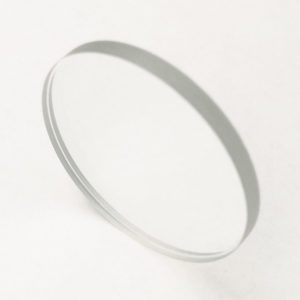
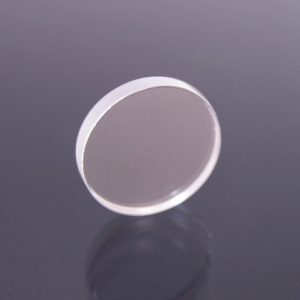

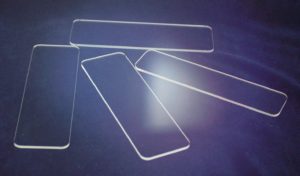
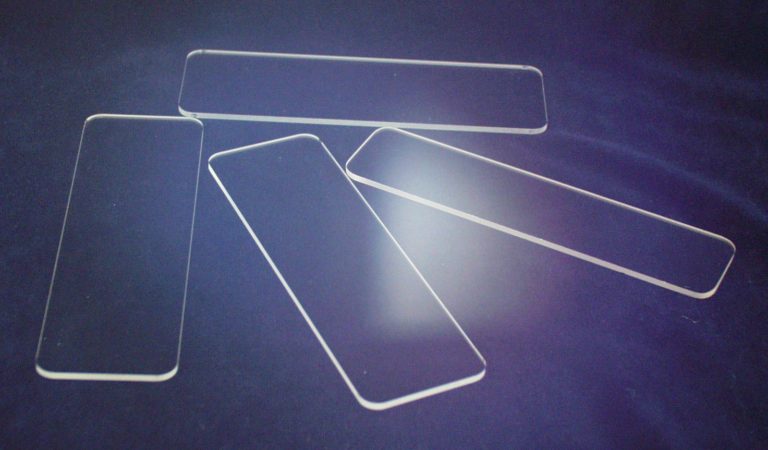
Is Sapphire Glass Man-Made?
Yes, sapphire glass is man-made in most circumstances as harvesting the natural material is impractical and expensive.
Lab-grown sapphire glass is just as hard as natural sapphire and can be grown to the specifications, enabling the manufacturer to achieve better results in less time without the harvest of natural resources.
Man-made sapphire glass can be produced in one of two ways: the melt method, or in a solution.
The Melt Method
In melt methods, also known as “flame fusion”, aluminum oxide powder is heated under a direct flame or through radio waves.
This causes the powder to form droplets of a teardrop-shaped mineral. Some melt methods can produce synthetic sapphires that are much larger than what can be found in naturally occurring deposits.
This method is the most synthetic way to produce lab-grown sapphire and can also result in a variety of other synthetic minerals such as rubies, depending on the melt method utilized and additional minerals added.
The Solution Process
The solution process is one of the most popular choices for lab-grown sapphires and results in a more natural, crystalline growth habit. This method can produce synthetic sapphire in the same chemical and physical structure as natural sapphire, allowing manufacturers to utilize a man-made resource rather than a diminishing natural resource.
This process, also known as hydrothermal synthesis, mimics natural formation at a considerably fast rate, similar to the process utilized to create synthetic diamonds. This pressure cooker-like environment subjects a mineral solution and a seed crystal to high pressure and heat which causes it to grow in a crystalline structure.
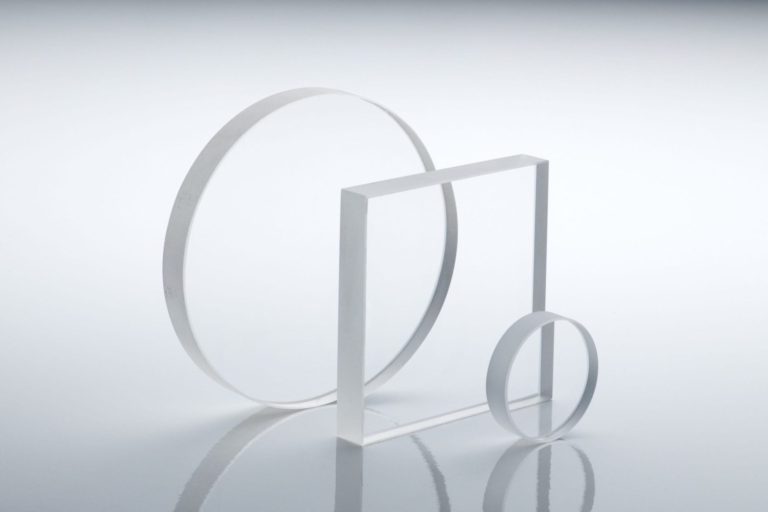
Key Attributes of Sapphire Optical Windows
Because of the structural strength of sapphire windows, they can be produced in thinner sheets than regular silicate glass, improving optical clarity overall, while maintaining a clear aperture and high surface quality.
A key attribute of sapphire glass is this mineral’s birefringent habit, which makes it an ideal material for high-quality waveplates. This enables the glass to be used as a wide optical transmission band, allowing the viewing of UV to near-IR spectrums.
Likewise, this material’s hardness and mechanical strength when layered give it an advantage over other optical materials or regular glass, as it can be used in hot, highly pressurized, or abrasive environments.
Even in optical environments where there are no high pressure, temperature, or abrasive conditions, sapphire glass is often preferred for its longevity in expensive equipment and ability to be chemically sanitized with ease.
Why Are The Windows Made of Sapphire?
Optical and manufacturing windows are made from sapphire because of the sheer number of benefits its boasts in terms of strength, overall durability, and clarity.
For many engineering and manufacturing applications, it can be difficult to find something that is as transparent as glass but with the strength necessary for the application.
For example, in submarine viewports, the material must be able to withstand high-pressure salinity, while still maintaining optical clarity.
Sapphire glass achieves each of these factors, maintaining clarity and scratch resistance to the saltwater and withstanding pressure without risking fractures in the glass. In addition to these benefits, it can also be cut to specific dimensions and shapes when necessary.
Likewise, medical instruments and cameras often need to withstand abrasive acids from the body while making it easy for staff to sanitize after use. Sapphire rods and windows can be polished to remove any surface flaws, and scratch resistance allows the instruments to be sanitized without concern about chemicals from the body or sanitization damaging the material.
Uses of Sapphire Windows
It’s no secret that sapphire windows have a wide range of uses in a variety of industries, and it has been gaining popularity in the mainstream media, particularly with those who are tuned into watchmaking or cellphone technology.
Still, that doesn’t shed any light on other uses that sapphire glass may have in other areas of manufacturing and engineering.
There are a few industries that utilize sapphire glass frequently, and chances are, you’ve encountered at least one of these applications at work or on an errand. Many of the core uses for sapphire glass are for commercial, military, and medical purposes:
Commercial Uses
There are a wide variety of uses for sapphire glass in commercial applications. From cell phone screens to DSLR camera lenses, this glass is beginning to enter into an era of public consumption as well.
Common grocery store scanners utilize sapphire glass to prevent scratches from interfering with the IR lasers and watch enthusiasts are all-too-familiar with flame fusion sapphire crystal faces that boast scratch resistance and high clarity.
Microscopes, magnifying glasses, and many other products also boast the quality that only sapphire glass can provide.
Military Uses
The military frequently uses sapphire windows and glass to cover the basic needs of the soldiers and their equipment. Eye protection, face shielding, and ground vehicle windows are all examples of the wide range of uses this glass has in the field.
Many innovative developments are underway to continue using the material in other military applications, including ballistic shields and improved bulletproof armor plating that weighs less than current materials.
These uses extend into aircraft applications as well, protecting pilots from airstrikes better than previous bulletproof glass materials while still allowing them to see the battlefield clearly.
Medical Uses
Sapphire windows are often used in a variety of medical equipment as they can be easily sanitized and can withstand strong acids and high temperatures which often prove abrasive to regular glass.
Likewise, its structural durability ensures that the equipment will not shatter or crack if inserted into the human body. Common medical uses include lasers, camera lenses, droppers, and x-ray screens.

Why We Should Use Sapphire Windows More in Modern Technology
Sapphire windows have been long overlooked in modern technology because of the amount of processing that these sheets must go through to reach the average consumer.
First, these sheets are grown in a lab, then this material is cut and shaped. Then polishing begins to remove any surface blemishes, and then they are graded according to optical clarity.
Once this process is completed, the sheets or rods are shipped to the manufacturer to be placed in the desired product, whether it’s grocery store scanners, camera lenses, or automobile windows for military use.
Many industries are on the precipice of switching to sapphire glass to offer higher-quality solutions to consumers, but the cost can be prohibitive, particularly for startups or products that are new to the market.
The more popular and in-demand sapphire glass becomes to the mainstream public, the more innovative manufacturing solutions will become, and production costs will lower as a result.
Furthermore, using sapphire windows in modern technology will encourage further development of sapphire glass treatments, improving impact resistance, scratch resistance, or layering techniques to expand the range of applications it can be used in.
Is Sapphire Stronger Than Glass?
Yes, sapphire windows are much stronger than traditional silicate-based glass. (1) Sapphire windows are capable of withstanding much more pressure and a wider range of materials than glass is capable of, particularly upon sustained or direct impact with another material.
- Nigam Arora
There is a scale used to define the hardness of any given material called the Mohs scale. This scale ranges from 1 to 10, and a variety of minerals and materials are assigned a number on this hardness scale.
To put sapphire windows into context: talc is considered a 1 on the Mohs scale, which is hardly resistant to pressure and impact at all.
Glass, depending on how it has been tempered and treated, can range anywhere from 4 to 5.5 on average – with some specially treated, impact-resistant glass used in smartphones and other devices reaching a 7.
Diamond, a naturally occurring substance made of pure carbon is most popularly known for its uses in jewelry and industrial applications because of its hardness. It is placed at 10 on the Mohs scale, making it famous as the “hardest mineral available.” Unfortunately, this also makes it difficult to work with, cut, and shape. In addition to that, its clarity when polished can be subpar.
Sapphire, however, is placed at 9 on the Mohs scale. While it is a step down from diamond, this is beneficial because the lower hardness makes it easier to cut, shape, and apply in a variety of applications, while remaining much more impact and scratch-resistant than regular silicate glass.
Furthermore, sapphire can be grown in a lab for a lower cost than diamond, which increases its availability, and can be polished to retain significant optical clarity, making it useful in microscopic and photographic applications.
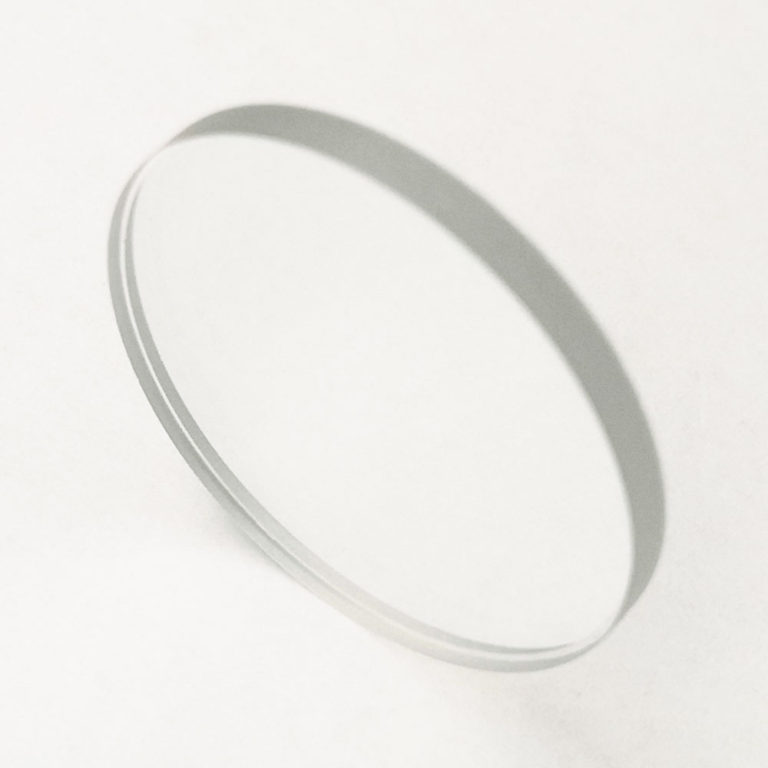
Can Sapphire Glass Break?
Sapphire glass can withstand a wide range of improbable conditions, from high-temperature furnace windows to high-pressure submarine viewports, and even contact with corrosive chemicals.
Not only that, but the man-made mineral is close to the hardness of diamond, making it scratch resistant in a way that only diamond or a limited number of very hot caustic chemicals can etch into.
Furthermore, sapphire windows can withstand pressure even better than stainless steel, making them ideal for high-pressure environments.
Scratch, chemical, and pressure resistance is ideal for a lot of applications, but in the case of camera lenses and phone screens, a lot of people are wondering whether sapphire glass can break or not. (2)
- Lisa Eadicicco
Unfortunately, yes, when using lower-grade sapphire windows for low-risk applications, there are some reports stating that under direct impact the sapphire glass can still break. If this glass is dropped, it won’t scratch, but it might crack or shatter at the right angles, something users must still be careful to prevent.
Sapphire glass may rank at a 9 on the Mohs scale, but in a thin sheet-form, it’s still possible for the structural integrity to give out on direct impact. This is particularly true in public consumer-grade glass, which is often layered with regular glass rather than remaining purely sapphire glass.
Fortunately, depending on the shape and thickness of the sapphire and silicate-layered glass, it may still prove to be more resistant to breaking or shattering than regular silicate glass alone.
Military and medical-grade sapphire windows are typically treated and layered differently than consumer-grade sapphire windows, making them more durable to direct impacts for high-risk environments. While this significantly increases the cost of production, the resulting product provides these industries with more durable, impact-resistant glass.
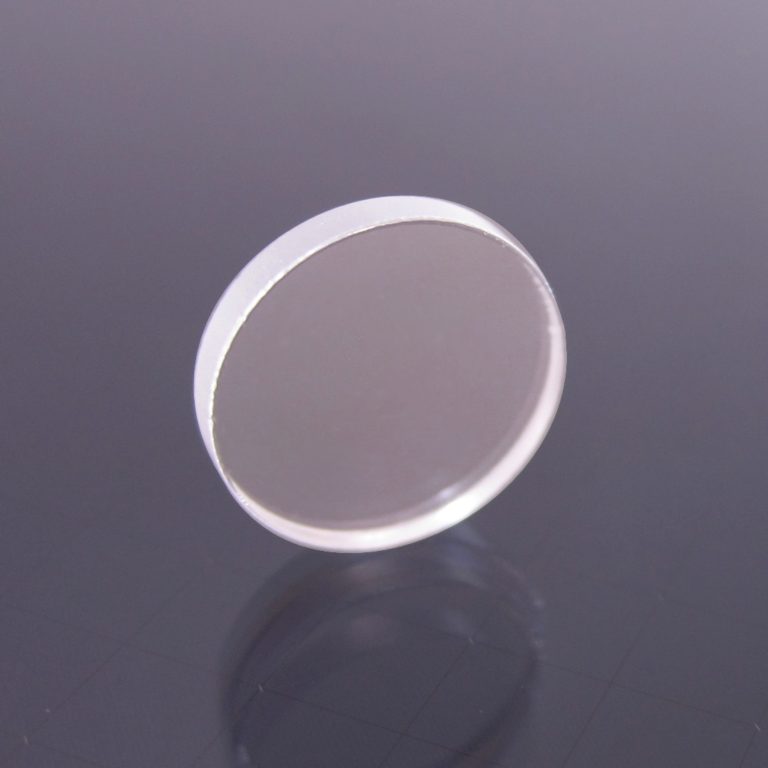
Where to Source Precision Quality Sapphire Windows?
In engineering and manufacturing, precision quality and long-lasting durability can be the difference between a successful project and a failed one, but this level of quality must also be balanced with cost-effectiveness.
Next time you are looking for high-quality sapphire windows, look no further than Analytical Components, the top choice for precision components that meet strict OEM standards.
We leverage our team’s in-depth knowledge of hard materials in manufacturing and engineering to create custom sapphire windows and other products to support your company’s project needs.
Having been in business for over 50 years, we understand the importance of quality and customer service, which is why we work directly with you to find the products that fit your needs exactly, whether you need manufacturing quality sapphire windows or optical quality sapphire.
Your project specifications are critical, and we understand that, which is why we strive to provide customized designs and dimensions based on your specifications for sapphire windows, flat stock, and rods.
Get in touch with a team member today to request a quote and see how we can accommodate your project’s specifications.
RECEIVE A QUOTE
- Nigam Arora, Sapphire Screen for iPhone 6 Could Be a Real Gem, https://www.forbes.com/sites/nigamarora/2013/11/18/sapphire-screen-for-iphone-6-could-be-a-real-gem/?sh=36e9a09a5f68
- Lisa Eadicicco, The Truth About Sapphire, The Insanely Hard Material Apple May Use for the iPhone 6 Screen, https://www.businessinsider.com/sapphire-glass-iphone-6-screen-2014-8
